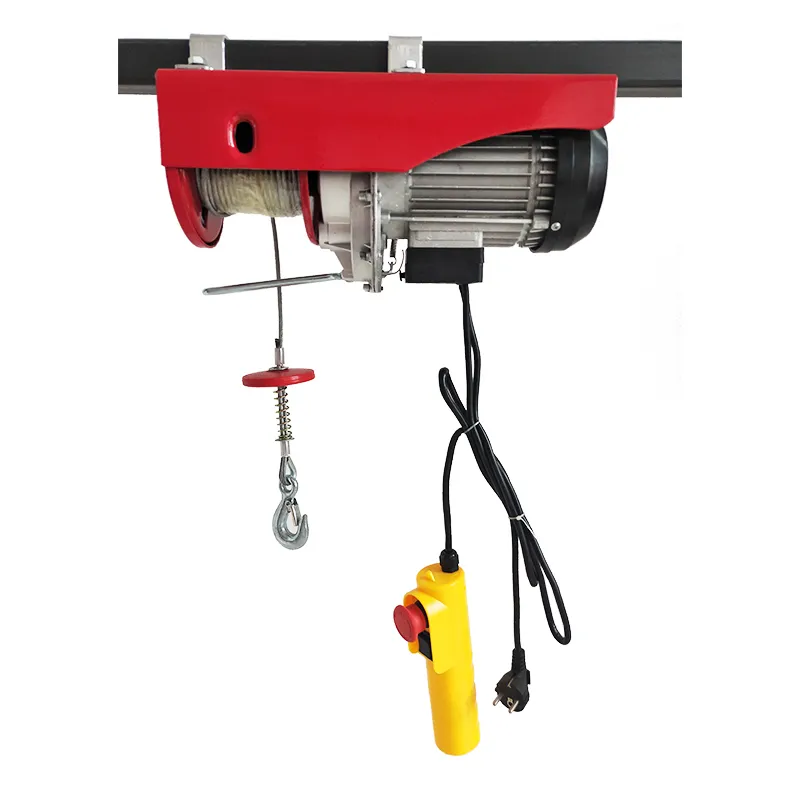


Safe Use of Chain Blocks Ensuring Efficiency and Safety in Lifting Operations
Chain blocks, also known as chain hoists, are manual or powered devices used widely in various industries for lifting heavy loads. Their versatility makes them invaluable in construction, manufacturing, and warehousing sectors. However, the safe use of chain blocks is critical to prevent accidents and ensure the well-being of operators and nearby personnel. This article discusses the best practices for the safe use of chain blocks, emphasizing preparation, operation, and maintenance.
Understanding the Equipment
Before using a chain block, it’s essential to understand its components and functionality. A typical chain block consists of a chain wheel, lifting chain, hook, and a ratchet mechanism. These components work together to allow for the smooth lifting and lowering of loads. Operators must be familiar with the load capacity of their specific chain blocks, as exceeding this limit can lead to equipment failure and serious injuries.
Prior Preparation
1. Inspection Prior to use, the chain block should be thoroughly inspected. Look for signs of wear, damage, or corrosion on the chain, hooks, and other parts. Any equipment showing signs of compromise should be taken out of service and repaired or replaced.
2. Load Calculation Always determine the weight of the load to be lifted and ensure that it falls within the rated capacity of the chain block. It’s advisable to add a safety margin, particularly for dynamic loads that may shift during lifting.
3. Work Area Ensure the area around the lifting operation is clear of obstructions and hazardous materials. Designate zones to keep bystanders at a safe distance.
4. Use the Right Equipment Use the appropriate type of chain block for the specific job. For example, if lifting a load in an outdoor or damp environment, a weather-resistant model would be suitable.
Operating the Chain Block

1. Training Only trained personnel should operate a chain block. Operators should understand safe lifting techniques and be aware of the potential hazards.
2. Secure Setup Ensure that the chain block is firmly secured to a stable, overhead support structure that can bear the load. Use properly rated shackles and rigging to connect the chain block to the load.
3. Lifting Technique When lifting, use smooth and steady motions. Avoid sudden jerks or rapid movements that can destabilize the load. If using a powered chain block, operators should remain alert and never leave the load unattended while it is elevated.
4. Signal Communication If there are multiple operators involved, establish clear hand signals or verbal commands to ensure everyone is aware of the operation status, particularly when lifting or lowering loads.
Post-Operation Procedures
1. Safe Stowage Once the lifting operation is completed, safely stow the chain block. Ensure that it is cleaned and stored in a designated area to prevent damage.
2. Regular Maintenance Routine maintenance and inspections are vital for the longevity and safety of chain blocks. Form a habit of checking for potential issues, lubricating the chain, and replacing any worn out parts.
3. Documentation Keep a log of inspections, maintenance, and any incidents. This documentation helps track the equipment's condition over time and provides valuable information for audits and safety evaluations.
Conclusion
The safe use of chain blocks is essential to minimize risk and ensure efficient lifting operations. By prioritizing inspection, proper training, and thoughtful operation procedures, employers and operators can significantly enhance the safety of their lifting activities. By fostering a culture of safety and responsibility, industries can continue to benefit from the advantages offered by chain blocks while safeguarding their workforce and adhering to regulations. Ultimately, a commitment to safety is not only a legal requirement but a fundamental aspect of operational integrity and success.



